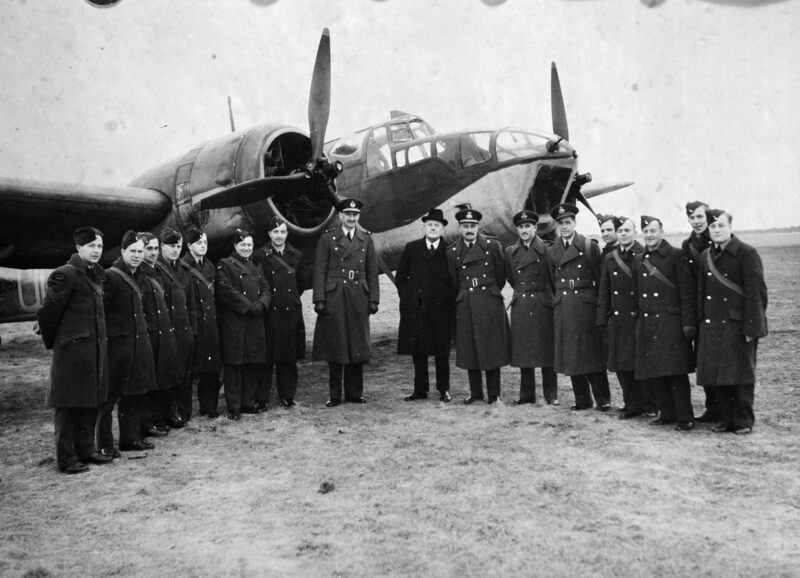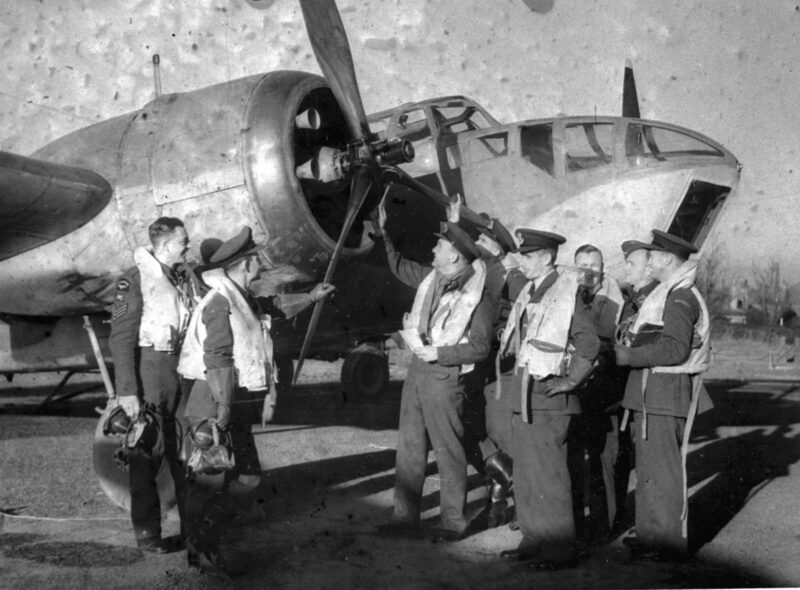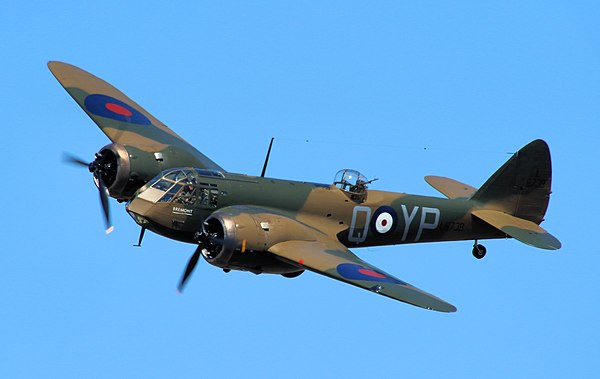Research
Research
Research
Bristol Blenheim
The Bristol Blenheim, which was used extensively both as a medium bomber and a fighter in the first two years of the war. RNZAF 489 Sq. also flew Blenheims in Coastal Command, and they were still being used as training aircraft until the end of the war, a versatile workhorse of an aircraft.
Originally conceived as high-speed commercial airliner, the prototype Bristol type 142 first flew in 1935. Test flights showed that the twin-engined aircraft was faster than the fighters then in service with the RAF, and the Air Ministry quickly formalised a new specification (B.28/35) for prototypes of a bomber version, and an order placed for 135 aircraft, now named the Bristol Blenheim.
The Blenheim typically carried a crew of three – pilot, navigator/bombardier and wireless operator/air gunner. The pilot’s quarters on the left side of the nose were so cramped that the control yoke obscured all flight instruments while engine instruments eliminated the forward view on landings.
Most of the secondary instruments were arranged along the left side of the cockpit, however some essential items such as the propeller pitch control were actually placed behind the pilot where they had to be operated by feel alone.
The navigator/bombardier was seated alongside the pilot and made use of a sliding/folding seat whilst performing the bomb aiming role.
The first aircraft entered service in 1937 and by the end of 1938 another fifteen squadrons of 2 Group had equipped with the type, although when war broke out many were in the process of converting to the improved Mk. IV version.
On the day that war was declared on Germany, a Blenheim Mk IV was the first British aircraft to cross the German coast to perform a high-altitude reconnaissance mission upon the German Navy in the vicinity of Wilhelmshaven.
The following morning, 15 Blenheims set off on one of the first bombing missions to attack the ships spotted on the previous day. The attack was a failure, the only damage caused when one aircraft crashed into the cruiser Emden.
In early 1940 Blenheim squadrons were based in France, supporting the BEF but they suffered heavy losses due to light defensive armament as they undertook low level attacks on the advancing German Army.
From July to December 1940, Blenheims raided German-occupied airfields both in daylight and at night. Although most of these raids were unproductive. Some missions produced heavy casualty rates.
One such operation was mounted on 13 August 1940 against a Luftwaffe airfield near Aalborg in north-western Denmark. Of the eleven aircraft of 82 Squadron, which reached Denmark, were shot down, five by flak and six by Bf 109s.
On 12 August 1941, a large-scale attack against power stations near Cologne took place. This was a low-level daylight raid by 54 Blenheims under the command of Wing Commander Nichol of No. 114 Squadron RAF. They hit their targets but twelve of the Blenheims (22%) were lost during the raid.
New Zealanders flying Bristol Blenheims
New Zealander Michael Herrick was posted to No. 25 Sq. at the age of eighteen, one of five brothers to serve in World War II. He flew the Blenheim on night patrols during the Battle of Britain. In September 1940 he scored the squadron’s first victories of the war – shooting down two Heinkel He 111 bombers within minutes of each other.
Herrick later destroyed another bomber nine days later, meaning he personally accounted for three of the four victories achieved by Fighter Command during night operations that month. His achievements were recognised with the award of the Distinguished Flying Cross (DFC).
Ian Walker won the Battle of Britain clasp by flying fifteen night missions in Blenheims over London. At the end of 1940 he converted to Beaufighters, then “a group of us got so fed up not doing anything we transferred to bombers”. He was trained on Wellingtons and assigned to 115 Sq. He then flew fifteen bomber sorties, before being shot down over Belgium and becoming a POW.

New Zealand High Commissioner, Mr WJ Jordan, with a group of No. 489 Squadron Officers
and airmen standing in front of a Bristol Blenheim Mk. IV.
(Credit: Air Force Museum of New Zealand).
The Royal New Zealand Air Force operated the Bristol Blenheim in 489 Squadron from 1941 as part of Coastal Command, within the Royal Air Force command structure. Blenheim Mk. IVF long range torpedo bombers were used to offset the short supply of Beaufort torpedo bombers.
The squadron’s Blenheims were replaced by Handley Page Hampden torpedo bombers in March 1942.

No. 489 Squadron air crew in front of a Bristol Blenheim Mk. IV, possibly Leuchars, Scotland. XXX
(Credit: Royal Air Force).
Obsolescence
The rapid advances in technology which had taken place in the late 1930s had rendered the Blenheim mostly obsolete by the outbreak of the war. It had become heavier as extra service equipment was installed; found to be necessary through operational experience.
This, together with the rapid performance increases of the fighters that would oppose it, had eclipsed the Blenheim’s speed advantage. By early 1942 Blenheims were being replaced by Bostons, Venturas and Mitchells and the type was withdrawn from service by October 1942.
There is one restored Blenheim Mk IV flying in the UK.

A restored Blenheim at RIAT, 2015.
(Credit: The Blenheim Society).
September 28, 2024